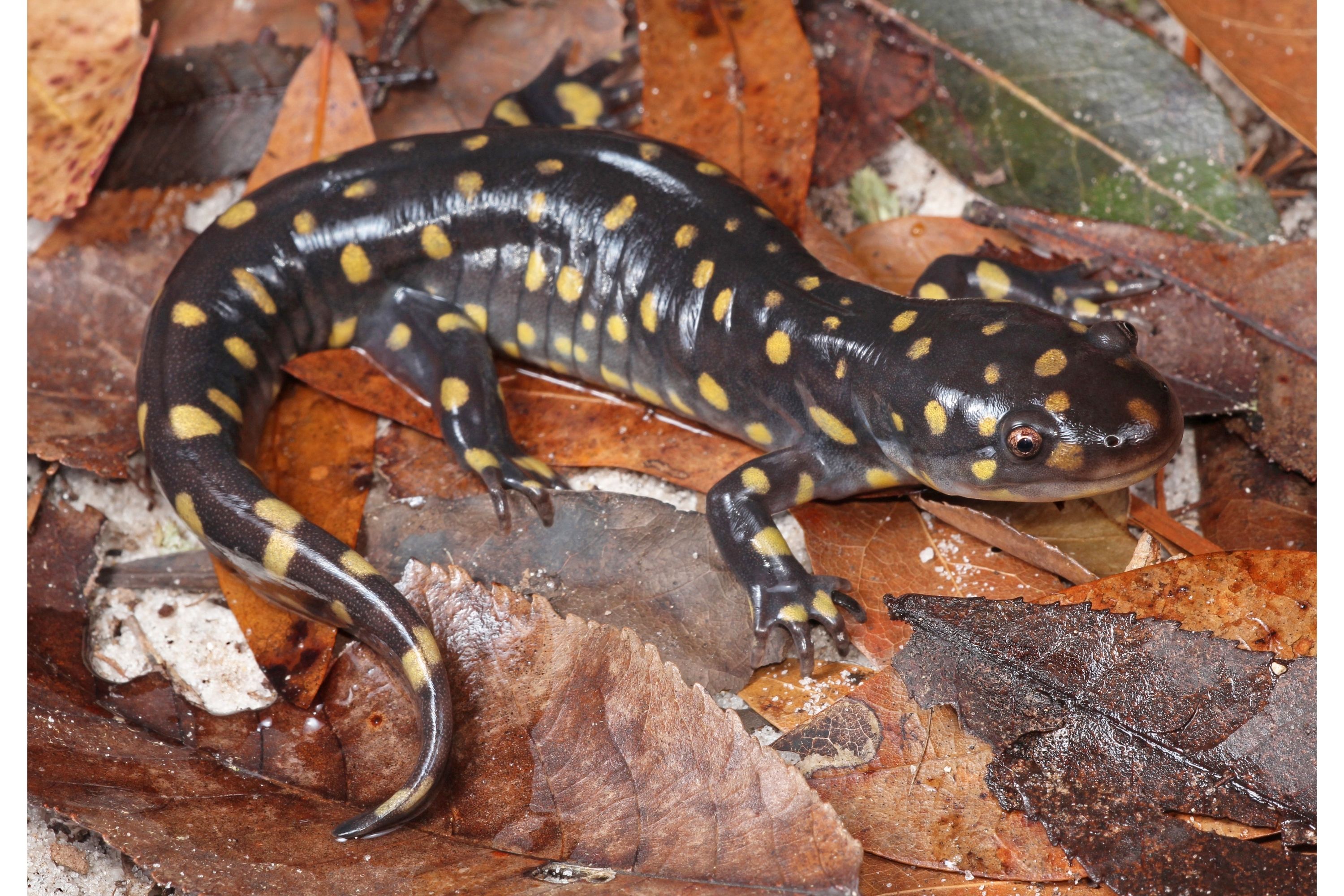Long-toed salamander
(Ambystoma macrodactylum)

Description
The long-toed salamander (Ambystoma macrodactylum) is a mole salamander in the family Ambystomatidae. This species, typically 4.1–8.9 cm (1.6–3.5 in) long when mature, is characterized by its mottled black, brown, and yellow pigmentation, and its long outer fourth toe on the hind limbs. Analysis of fossil records, genetics, and biogeography suggest A. macrodactylum and A. laterale are descended from a common ancestor that gained access to the western Cordillera with the loss of the mid-continental seaway toward the Paleocene. The distribution of the long-toed salamander is primarily in the Pacific Northwest, with an altitudinal range of up to 2,800 m (9,200 ft). It lives in a variety of habitats, including temperate rainforests, coniferous forests, montane riparian zones, sagebrush plains, red fir forests, semiarid sagebrush, cheatgrass plains, and alpine meadows along the rocky shores of mountain lakes. It lives in slow-moving streams, ponds, and lakes during its aquatic breeding phase. The long-toed salamander hibernates during the cold winter months, surviving on energy reserves stored in the skin and tail. The five subspecies have different genetic and ecological histories, phenotypically expressed in a range of color and skin patterns. Although the long-toed salamander is classified as a species of Least Concern by the IUCN, many forms of land development threaten and negatively affect the salamander's habitat. The long-toed salamander is an ecologically versatile species living in a variety of habitats, ranging from temperate rainforests, coniferous forests, montane riparian, sagebrush plains, red fir forest, semiarid sagebrush, cheatgrass plains, to alpine meadows along the rocky shores of mountain lakes. Adults can be located in forested understory, hiding under coarse woody debris, rocks, and in small mammal burrows. During the spring breeding season, adults can be found under debris or in the shoreline shallows of rivers, streams, lakes, and ponds. Ephemeral waters are often frequented.
Taxonomic tree:







